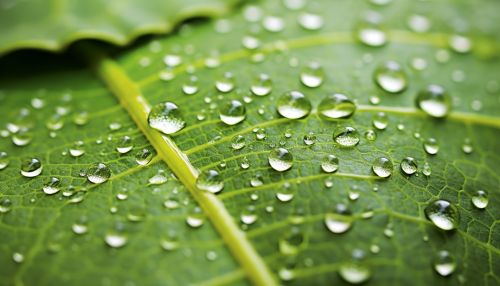Mechanisms of Plant Defense Against Pests and Diseases
Introduction
Plants, like all living organisms, are susceptible to a variety of pests and diseases. To survive and reproduce, they have evolved a range of defense mechanisms to protect themselves. These mechanisms can be broadly divided into physical and chemical defenses, each with its own set of strategies and tactics. This article will delve into the intricate details of these defense mechanisms, providing an in-depth understanding of how plants protect themselves from harm.
Physical Defenses
Physical defenses in plants are the first line of defense against pests and diseases. They are often structural features that deter or prevent pests from reaching the plant tissues they aim to exploit.
Mechanical Barriers
Mechanical barriers are physical structures that prevent pests from accessing the plant's tissues. These can include the plant's outer layer, known as the epidermis, which can be tough and difficult for pests to penetrate. Other mechanical barriers include trichomes (hair-like structures on the plant surface), thorns, and spines, which can physically deter pests.


Morphological Adaptations
Plants have also evolved various morphological adaptations to deter pests. These include the development of thick bark, the growth of dense foliage, and the formation of a dense root system. These adaptations can make it difficult for pests to penetrate the plant's defenses and reach the tissues they aim to exploit.
Chemical Defenses
In addition to physical defenses, plants also employ a range of chemical defenses to protect themselves from pests and diseases. These defenses involve the production of a variety of chemical compounds that can deter pests, inhibit their growth, or even kill them outright.
Secondary Metabolites
One of the primary ways plants defend themselves chemically is through the production of secondary metabolites. These are chemical compounds that are not necessary for the plant's immediate survival, but which provide some other benefit, such as defense against pests and diseases. Secondary metabolites include a wide range of compounds, including alkaloids, terpenoids, and phenolics, each with its own unique defensive properties.
Induced Defenses
In addition to the constant production of secondary metabolites, many plants also have the ability to ramp up their chemical defenses in response to pest attack. This is known as induced defense. When a plant is attacked by a pest, it can respond by increasing the production of certain defensive chemicals. This can help to limit the damage caused by the pest and may even help to deter future attacks.
Plant Immune System
Just like animals, plants also have an immune system that helps them to detect and respond to the presence of pests and diseases. The plant immune system is a complex network of cells and molecules that work together to protect the plant from harm.
Recognition of Pests and Pathogens
The first step in the plant immune response is the recognition of pests and pathogens. Plants have a variety of receptors that can recognize molecules associated with pests and pathogens. These include pattern recognition receptors (PRRs) that can recognize common microbial patterns, and resistance (R) proteins that can recognize specific pest or pathogen molecules.
Signal Transduction
Once a pest or pathogen has been recognized, the plant needs to transmit this information to the rest of the plant so that an appropriate response can be mounted. This is achieved through a process known as signal transduction. In signal transduction, the recognition of a pest or pathogen triggers a cascade of events that ultimately leads to the activation of the plant's defenses.
Activation of Defenses
The final step in the plant immune response is the activation of defenses. This can involve the production of defensive chemicals, the strengthening of physical barriers, and the activation of other defensive responses. The exact nature of the defense response will depend on the nature of the threat and the specific capabilities of the plant.
Co-evolution of Plants and Pests
The ongoing battle between plants and their pests has led to a process of co-evolution, where the evolution of one species drives the evolution of the other. This has resulted in a complex and dynamic relationship between plants and their pests, with each constantly evolving new strategies and counter-strategies in an ongoing arms race.
Conclusion
Understanding the mechanisms of plant defense against pests and diseases is crucial for the development of sustainable agricultural practices and for the conservation of our natural ecosystems. As we continue to study and understand these mechanisms, we will be better equipped to protect our crops and natural plant communities from the threats posed by pests and diseases.
